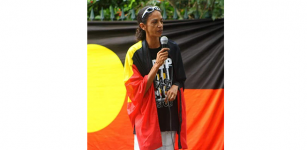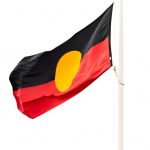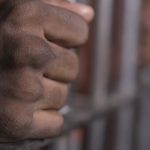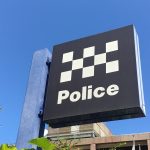Indigenous Deaths in Custody Continue Unabated

Two Aboriginal teens drowned in the Swan River on 10 September while being pursued by WA police. The youths – 17-year-old Jack Simpson and 16-year-old Chris Drage – made it to the middle of the river that flows through Perth, but then they got into difficulties.
The police officers were chasing five teenage boys, who were allegedly jumping fences in the riverside suburb of Maylands. WA water police subsequently recovered one of the boy’s bodies that evening, while the other body was retrieved the following morning.
Two of the other teenage boys who entered the river were accounted for following the police pursuit. And it was initially feared officers had chased a third boy to his death, until his safety was confirmed by his family the next day.
Authorities are treating the incident as deaths in custody. And as the local Noongar community mourns the loss of the boys, questions are being asked as to why police chased them into the river, as well as why the teens were so afraid of authorities that they risked their lives in escaping.
A colonial pursuit
“Our people will automatically run,” said Gwenda Stanley, a representative of Indigenous rights group FISTT. She explained that this is due to the generational trauma that First Nations people have suffered under colonisation, and the rest of Australia are only waking up to this now.
“Nothing’s changed in 230 years,” Ms Stanley made clear. “Our people have always been an open game for the native police and the police. It’s been part of the experimental killing field. We’ve been on open game.”
The Gomeroi woman told Sydney Criminal Lawyers® that the deaths of the two boys, as well as another that’s come to light since this tragedy, has brought the number of Indigenous deaths in custody to 410 since the end of the Royal Commission into Aboriginal deaths in custody in 1991.
The Guardian Australia recently released its Deaths Inside database, which tracks the known Aboriginal and Torres Strait Islander deaths in custody since 2008. It documents that on 31 August 147 such deaths had occurred over the last decade, and at least 407 had taken place since 1991.
Time for action
Following renewed calls for the government to act after the release of the Guardian’s findings, Indigenous affairs minister Nigel Scullion said that the Coalition government is currently reviewing the 339 recommendations of the Royal Commission.
However, the review of the 27-year-old recommendations – the majority of which have never been acted upon – is not a response to the recent outcry over the deaths in custody revelations, but it’s something the Indigenous affairs minister commissioned last year.
“What we need is action,” Ms Stanley stressed. “They failed to implement these recommendations back in 1991.” Rather than a review, the long-time activist said there needs to be an overhaul of legislation and policies at all levels of government that’s informed by First Nations communities.
“We need our own systems that we can look after,” Ms Stanley continued, adding that the only way to stop deaths in custody is if Aboriginal people are able to have direct input into how justice processes and medical treatment is being carried out in relation to their people.
NSW deaths in custody
Over the last four years, nine Indigenous people have died in custody in NSW. Just this month, Nathan Reynolds died in the Outer Metropolitan Multi-Purpose Correctional Centre due to a severe asthma attack, which prison authorities failed to respond to as a medical emergency.
In a case similar to what’s just transpired at Swan River, 31-year-old Patrick Fisher fell from the 13th floor of an apartment block in Sydney’s Waterloo in February this year, whilst trying to evade Redfern police who were attempting to gain access to the apartment.
And Rebecca Maher mysteriously died in a holding cell at Maitland police station, after officers picked her up on the side of the road in an agitated state. She was placed in the cell at 1 am on 19 July 2016, and officers reported finding her dead just five hours later.
A belated inquest stalled
Back in December 2015, David Dungay died at the Long Bay gaol mental health ward, whilst five correctional officers held him down and a nurse injected him with a sedative. Video footage shows that the 26-year-old Dunghutti man called out that he couldn’t breathe 12 times during the incident.
The inquest into Mr Dungay’s death finally got underway in July this year. However, after two weeks the coroner said the court had run out of time and therefore the inquiry would have to be put on hold for another year.
“It’s pretty sad that these people have to wait around for another 12 months to get some answers in regard to what’s happened to that young lad,” Ms Stanley said. She held a meeting with Mr Dungay’s father and stepmother, David and Kylie Hill, just this week to discuss the ongoing inquest.
Remembering Tane
It’s been a year this week that Tane Chatfield was found unconscious in his cell at the Tamworth Correctional Centre, where he was being detained on remand. Two days later, the 22-year-old Gomeroi and Wakka Wakka man died in hospital.
Despite prison authorities announcing that there was nothing suspicious about Mr Chatfield’s passing, many in the community assert that the circumstances surrounding his death were very suspect.
Mr Chatfield was said to have been found hanging in his cell. However, NSW Greens MLC David Shoebridge stated last October that he’d sighted a number of photos taken by Mr Chatfield’s family while he was in hospital that revealed extensive injuries “inconsistent with death by hanging.”
Ms Stanley is Tane’s aunt. “It was ridiculous. Tane was going to be released in the next couple of days,” she said. “He had a young baby. We can’t see Tane doing this harm to himself.” She added that not only police, but medical staff also keep quiet about circumstances surrounding these cases.
Profit in front of solutions
Two key recommendations of the Royal Commission into Aboriginal deaths in custody were for police to use arrest as a sanction of last resort, and for imprisonment to be utilised by authorities as a last measure.
But, these recommendations have obviously been ignored. Today, Aboriginal and Torres Strait Islander people are proportionally the most incarcerated people on earth. They account for 28 percent of the prison population in this country, but less than 3 percent of the overall populace.
As far as Ms Stanley’s concerned, Australian governments and private companies are using her people as a commodity. Incarceration has become a business, she concluded. “Our people have got tickets on them.”







